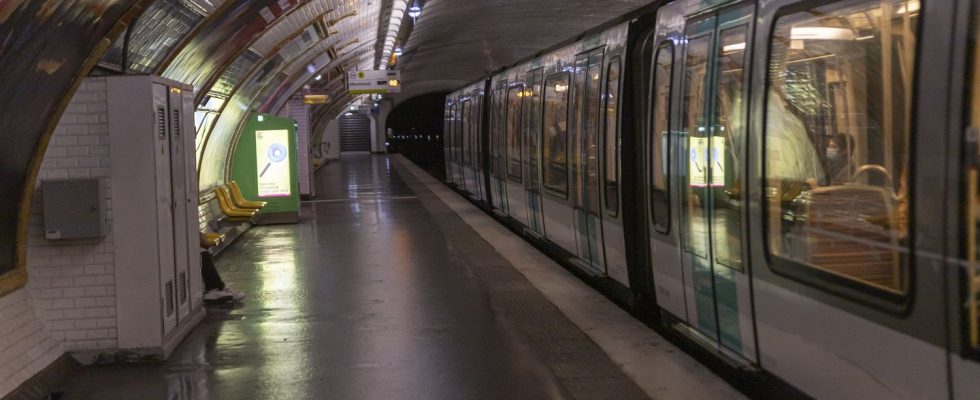The investigative show “Vert de rage”, broadcast Monday evening on France 5, investigated fine particle pollution in stations in Paris and the inner suburbs.
Unprecedented measures. For eight months, a dozen journalists investigated the quality of the air breathed by the millions of travelers who use underground public transport in Paris and the inner suburbs every day. Supported by scientists, they measured the levels of fine particle pollution in the 332 metro and RER stations in the capital and its close suburbs. The results of their study are presented in the documentary Metro, air alertfrom the series “Vert de rage”, directed by Martin Boudot and Mathilde Cusin. He is broadcast Monday October 2 at 9:05 p.m. on France 5.
>> Discover the new measurements of air quality in your station
The “Vert de rage” team measured overpollution, that is to say the difference between the level of fine particle pollution in the air outside, in the streets, and inside. , in the stations. Equipped with optical air sensors, the size of a cell phone, the journalists were guided in their investigation by Jean-Baptiste Renard, research director at the CNRS. Head of the scientific committee of the Respire association, which has been fighting for better air quality in the metro for years, he supervised the analysis of thousands of data collected by reporters.
The air in the metro is almost twice as polluted
The measures target PM2.5 particles (whose diameter is less than or equal to 2.5 microns), those which present the greatest risk of infiltrating our lungs, our blood and our organs, and can therefore have an impact on our health. Chronic exposure contributes to increasing the risk of contracting cardiovascular and respiratory diseases, as well as lung cancer. No less than 40,000 deaths per year “can be attributed to this exhibition in France”, according to figures given by Public Health France in September 2021.
Franceinfo revealed the conclusions of this field investigation in May. It appears that on the platforms of the Paris metro, the air is on average almost twice as polluted as outside, with a concentration of fine particles of 10.5 micrograms per cubic meter of air (μg/ m3). This level of pollution is also more than twice the threshold recommended by the World Health Organization (WHO).
However, not all Paris metro lines display the same level of pollution. Line 5, for example, is the one which showed the highest average overpollution of the network, with 18 μg/m3, i.e. a level 3.6 times higher than the WHO recommendations. This pollution is generated in particular by the abrasion of the brakes and the wear of the rubber tires of certain trains or even the mineral environment of the tunnels.
This polluted air is released into the streets
The “Vert de rage” investigation also focuses on the release of air from the metro into the streets of the capital, through some 300 air vents. The journalists’ measurements reveal that, when the air in a station has a high level of pollution, this high concentration of fine particles is also found at the outlet of these vents and in their immediate environment.
In the wake of these revelations, RATP announced in May that it regretted not having been associated with the study and that it doubted the reliability of the measurements. Ile-de-France Mobilités (IDFM), however, has launched an action plan with the aim of improving air quality in metro and RER stations.
The documentary Metro, air alertfrom the series “Vert de rage”, directed by Martin Boudot and Mathilde Cusin, is broadcast Monday October 2 at 9:05 p.m. on France 5.
